The Japan Foundation, New York: How the Japanese Video Game Industry Found, Lost, and Rediscovered Its Way
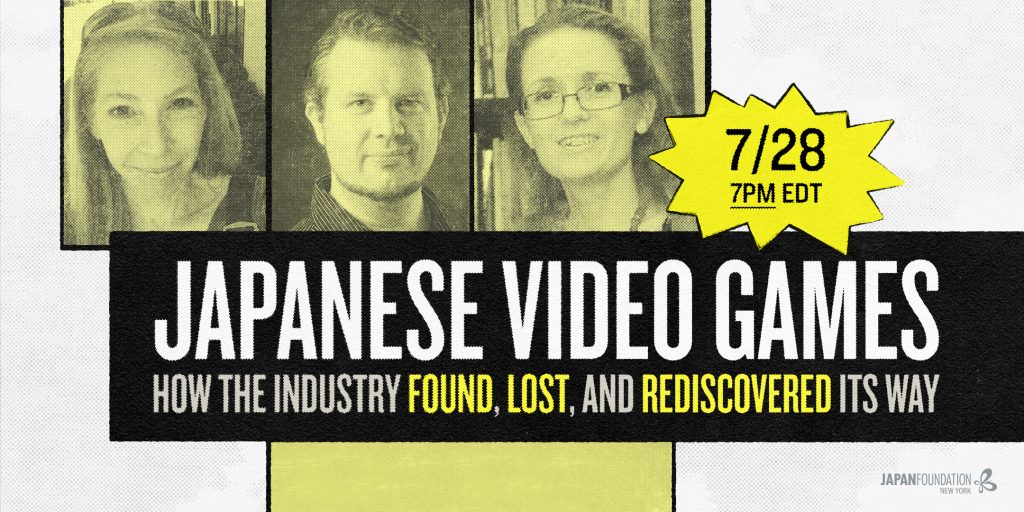
About this event
Super Mario, Pac-Man, Sonic, Final Fantasy, Street Fighter, and Metroid. If you’ve ever played a video game, chances are you’ve probably heard of some of these titles. Perhaps these titles might even evoke fond, nostalgic memories of childhood to some players who grew up with them. While many of these Japanese games are widely recognized, loved, and still played by many fans worldwide today, players might not realize just how integral these games were in popularizing the videogame culture in the west, and influencing both the growth and course of the global videogames industry.
For our first episode focusing on the topic of videogames, we will be joined by Mr. Chris Kohlerand Dr. Mia Consalvo, who will be taking us on a historical journey with their presentations; delving deep into the history of the Japanese videogames industry, specifically focusing on events which kickstarted this global phenomenon, along with some of the issues which caused it to lose its way and fall behind its western counterpart in the 2000s.
Dr. Rachael Hutchinson will moderate our discussion following the presentations, continuing the narrative of how the Japanese games industry recovered, and rediscovered its position in the global landscape, once again becoming an influential powerhouse in the international games market from the mid 2010s.
The discussion will be followed by a live Q&A. If you have any questions about your favorite Japanese videogames, now is your chance to ask the experts! Please ask your question when you register for the event via Eventbrite. Live commentary will also be enabled on the YouTube stream, so you can participate in the Q&A session on-air as well.
This is a FREE event. Registrants will receive the link to the stream via email.
We look forward to seeing you there!
Eventbrite Registration link: https://www.eventbrite.com/e/how-the-japanese-video-game-industry-found-lost-and-rediscovered-its-way-registration-161812729229
JFNY Literature Series Ep#4
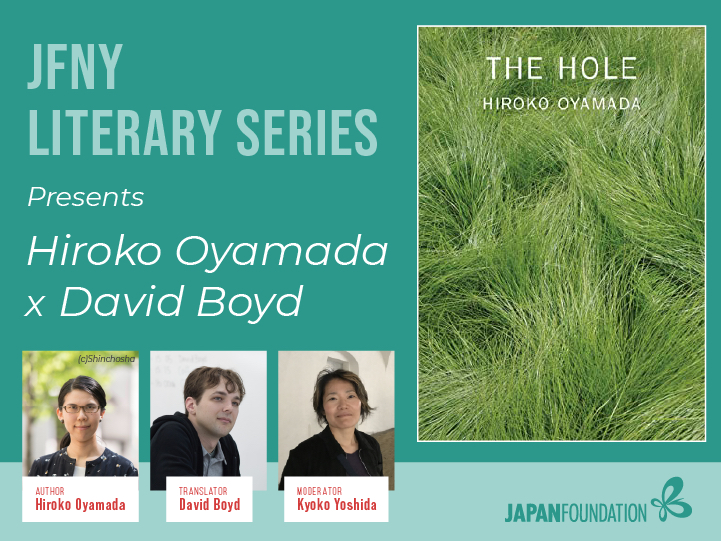
About
JFNY Literary Series invites notable writers in Japanese literature and their translators to discuss their work, speak on the art of translation, and touch upon the current literary scene in Japan.
This session features Hiroko Oyamada and her translator David Boyd, moderated by Kyoko Yoshida. Lucy North from the collective Strong Women, Soft Power and interpreter Bethan Jones also joins the session. Oyamada is an Akutagawa Prize-winning writer and the author of The Factory and The Hole, both of which were translated by Boyd. The Japan Foundation supported the English publications of The Hole through the Support Program for Translation and Publication on Japan.
The event is now available to watch on our YouTube channel! Watch the event here: https://www.jfny.org/event/jfny-literary-series-hiroko-oyamada-x-david-boyd/
Job: Part-time Bilingual Opportunity – The Institute of Real Estate Management (Chicago, IL, USA)
Posted by Sydney Sparrow. Click here to join the JETwit Jobs Google Group and receive job listings even sooner by email.
Position: Part-time Bilingual Japanese/English Opportunity
Posted by: The Institute of Real Estate Management (IREM(R))
Location: Chicago, IL, USA
Contract: Part-Time
Here’s a job received directly from the company:
Who we are
At the Institute of Real Estate Management (IREM®), we believe that well-managed properties improve the quality of life for people who live, work and shop in them. We are the champion of the property management professional—from college students to industry veterans across both commercial and residential portfolios. The Institute of Real Estate Management (IREM®) is an international force of nearly 20,000 individuals united to advance the profession of real estate management.
Job: Program Officer – Japan Center for International Exchange (New York, NY, USA)
Posted by Sydney Sparrow. Click here to join the JETwit Jobs Google Group and receive job listings even sooner by email.
Position: Program Officer
Posted by: Japan Center for International Exchange
Location: New York, NY, USA
Contract: Full-Time
Here’s a job passed along to us directly from The Japan Center for International Exchange (JCIE/USA):
The Japan Center for International Exchange (JCIE/USA) seeks a full-time Program Officer to support our mission to promote US-Japan collaboration on common challenges and leadership on regional and global issues. Our programs aim for policy impact through leadership exchanges, intellectual dialogues among policymakers and scholars, and engagement of civil society and the international community.
In addition to US-Japan Political Exchanges, Congressional Staff Exchanges, US-Japan Women Leaders Dialogues, and philanthropic initiatives, our current programs address topics including global health, healthy aging, and strengthening democratic governance in Asia.
Application Process: For information on how to apply, please click here.
Japan-Insights: Solar Calendar of The Kanayama Megaliths
************By Makoto Shirai, secretary, Japan-Insights Research Institute (Non-profit organization in Tokyo)
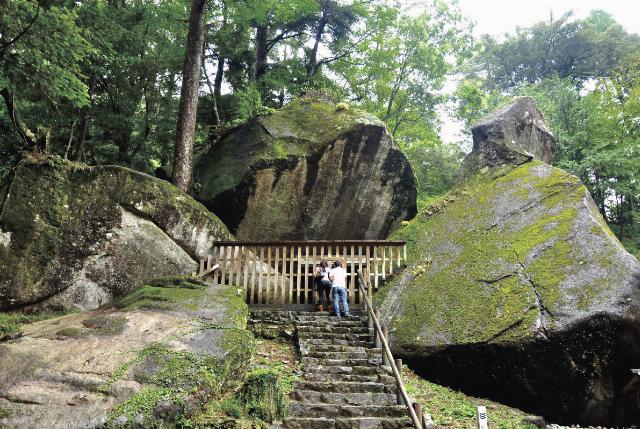
Dear Friends,
Have you visited to the Kanayama megaliths?
Let me introduce an essay from Japan-Insights archives.
The sixteenth one is on Jomon Astronomy by Dr. Harriet H. Natsuyama.
https://topics.japan-insights.jp/Public/pdf/japan-insights_jp/topics/JIN_KanayamaMegaliths.pdf
Please share this expert’s experience!
Japan-Insights is a nonprofit open database compiled by leading experts in Japanese studies. The posts present a broad range of historical and contemporary topics that encourage visitors to engage with the real Japan through immersive experiences. Follow the Facebook page and website to learn about and share these insights from around the country!”
#japan #japaneseculture #magalith
Re:Zero: Death is not the End
By Jack McDonough, 2021 prospective JET
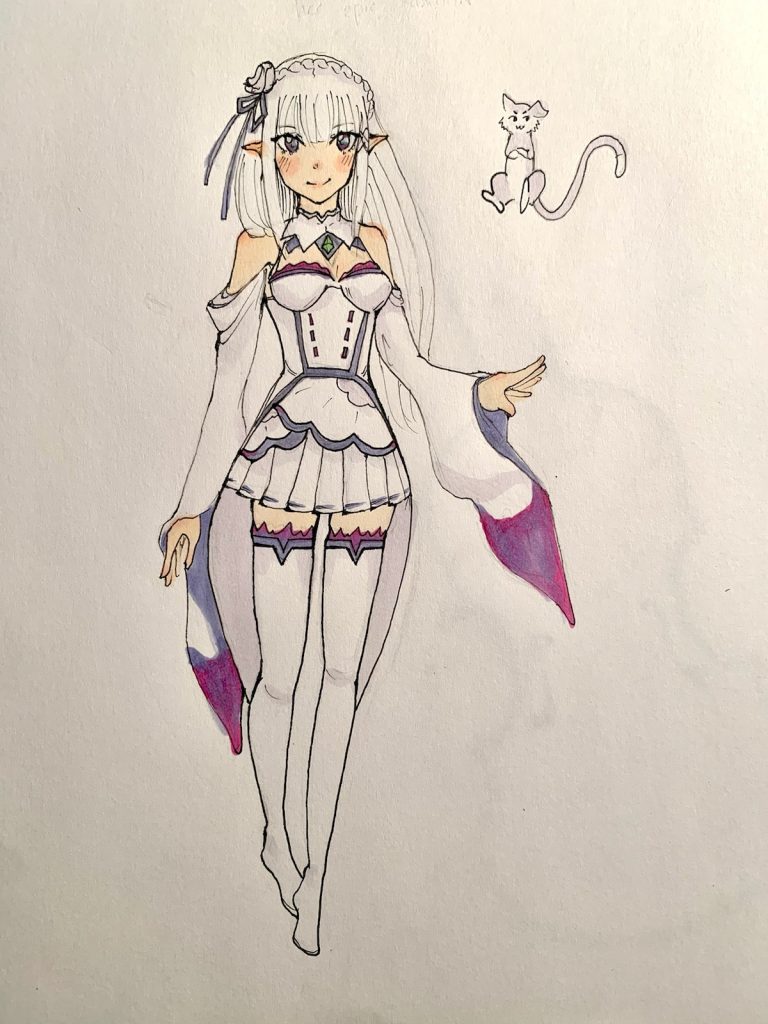
If you’re a fan of anime, manga, or light novels, then chances are you’ve heard of the genre “Isekai.” Isekai, meaning another world, is a genre that features a character, usually from Earth, getting transported to another world, which is usually a standard fantasy world akin to Lord of the Rings. In most cases, the heroes of these stories find out they have hidden powers and are the only ones who can save the new world to which they’ve been transported. These heroes are usually men and are surrounded by beautiful women who have no agency. Re:Zero subverts those expectations and delivers to its audience Subaru Natsuki: a weak nerd from Japan.
Re:Zero Starting Life in Another World is an anime adaptation of the light novel Ri:Zero kara Hajimeru Isekai Seikatsu by Tappei Nagatsuki, where seventeen-year-old Subaru Natsuki is transported to the nation of Lugunica one evening after leaving a convenience store. Subaru, a recluse and avid reader of Isekais, is ecstatic when he realizes he’s been “Isekai-ed” into a world of mages, knights, and nobility. He meets a beautiful, half-elf mage (who will remain unnamed in this review due to spoilers). His enthusiasm turns to horror when he finds out that, unlike other Isekai heroes, no dormant powers are awakened in him; his only power is that, upon death, time rewinds to the moment he arrived in Lugunica. Not only does he find out that he has this power after being murdered, he learns that magic renders him unable to speak about his ability.
At first, I thought that Re:Zero was interesting, but nothing worth writing about. After watching half of the first season, it dawned on me that this anime was the perfect blend of horror, mystery, and adventure that requires you to binge the whole series. Subaru’s ability to rewind time by dying fleshes out the story by allowing the audience to see what-if scenarios that otherwise would be inaccessible. In these other timelines, almost every character that appears on-screen dies in some gruesome way, often multiple times, before Subaru finds a way to save them from their demise.
Another one of Re:Zero’s strong points is the nation of Lugunica, which transforms from a seemingly simple place to one of interesting lore and complex political issues that every character has a stake in. Characters that received 5-10 minutes of screen time in season one turn out to be major players with rich backstories in season two, showcasing Nagatsuki’s thorough world-building and attention to detail. The way Nagatsuki builds Subaru from an annoying, selfish, and sexist boy into a caring and heroic man is masterful. There’s also a bevy of plot twists to keep the viewer on the edge of their seat and plenty of awesome fight scenes to behold. Couple this with quality animation and an amazing soundtrack and you’ve got something worth writing about.
Should you watch Re:Zero? Yes. Right now. This show is a classic case of “more than meets the eye.” What starts out as a simple fantasy, turns out to be a must-watch nightmare. You’ll love and hate every second of Subaru’s torturous struggle to save the lives of his new friends and understand the mysteries of his new world; this Isekai.
WIT Life #354: 969 NYC Coffee
Interpreter/Translator/Writer Stacy Smith (Kumamoto-ken CIR, 2000-03) presents WIT Life, a periodic series about aspects of Japanese culture such as art, film, food and language. Stacy starts her day by watching Fujisankei’s newscast in Japanese, and here she offers some interesting tidbits and trends along with her own observations.
Japan’s COVID-19 situation continues to worsen, and the state of emergency declaration for Tokyo, Osaka and eight other prefectures has been extended through mid-June. Okinawa in particular has shown high case numbers as of late. And yet the Olympics are still scheduled to proceed without a hitch?…Meanwhile, here in the U.S. we are slowly coming out of our quarantine slumber and rejoining the real world. Last weekend’s warm temperatures allowed my partner and I to discover a great Japanese cafe during a walk.
This spot is 969 NYC Coffee, opened by owner/chef Mitsumine Oda in 2016. He worked in the past for a Tokyo company, but he hated being a salaryman under someone else’s direction. Sick of long hours and in search of independence, he decided to quit and strike out on his own in the U.S. Oda first worked at a sushi cafe in Manhattan for three years, where he earned enough money to buy a house for himself and his sister and mother, who had also immigrated and became citizens.
969 NYC Coffee’s menu features a variety of onigiri, ramen, sushi and other Japanese food faves. Don’t be fooled by the name, as it also has an extensive menu of non-coffee drinks, especially matcha options. We got a smattering of delicious dishes, starting with onigirazu, a sandwich with rice instead of bread and wrapped in seaweed (I tried this for the first time and found it to be very filling!). We enjoyed the two types of Hiroshima fried oyster (カキ or kaki), adorned with avocado and a slice of American cheese, and fried mackerel (アジ or aji), also with avocado as well as a spicy mayo sauce. Rounding out our meal were seaweed salads and luxurious coconut milk matcha lattes (made with matcha from Japan, Oda noted.)
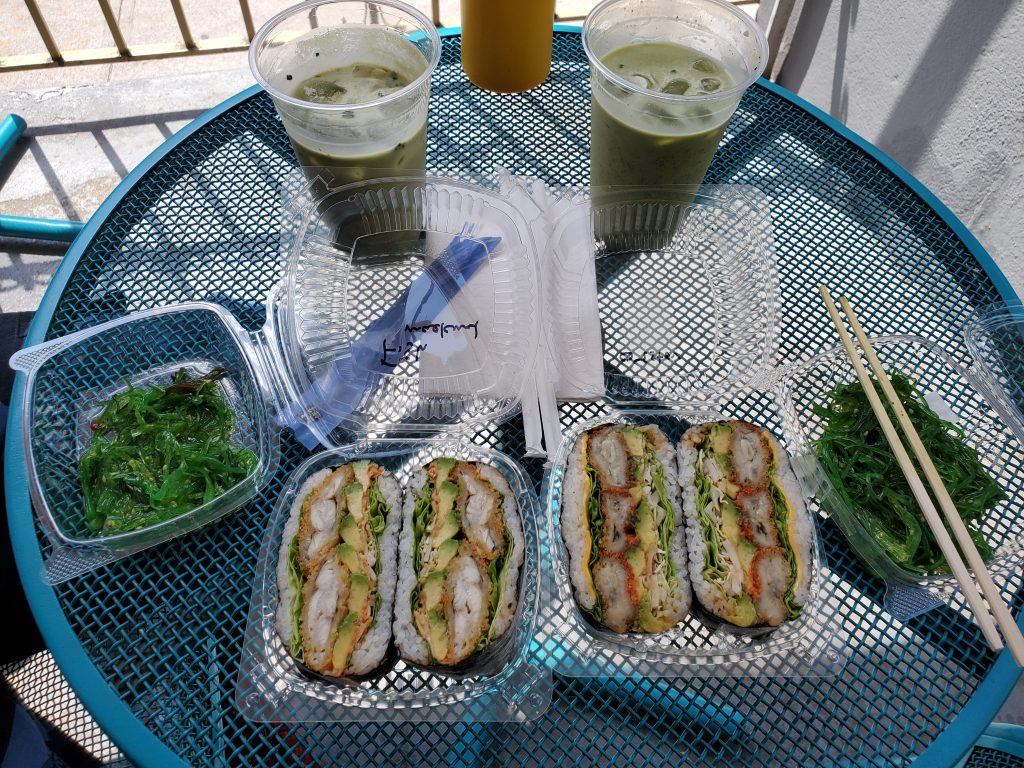
Japan-Insights: Japan-Insights: The Symbol of Modern Japan
************By Makoto Shirai, secretary, Japan-Insights Research Institute (Non-profit organization in Tokyo)

Dear Friends,
Have you heard of the story behind Meiji Jingu Shrine?
Let me introduce an essay from Japan-Insights archives.
The fifteenth one is on Emperor Meiji by Dr. Ewa Rutkowska.
https://topics.japan-insights.jp/Public/pdf/japan-insights_jp/topics/JIN_SymbolOfModernJapan.pdf
Please share this expert’s experience!
Japan-Insights is a nonprofit open database compiled by leading experts in Japanese studies. The posts present a broad range of historical and contemporary topics that encourage visitors to engage with the real Japan through immersive experiences. Follow the Facebook page and website to learn about and share these insights from around the country!”
#japan #japaneseculture #Meiji
Job: International Relations Specialist – Hiroshima Peace Culture Foundation (Hiroshima, Japan)
Posted by Sydney Sparrow. Click here to join the JETwit Jobs Google Group and receive job listings even sooner by email.
Position: International Relations Specialist
Posted by: Hiroshima Peace Culture Foundation
Location: Naka-ku, Hiroshima, Japan
Contract: Part-Time
Here’s a job received directly from the Hiroshima Peace Culture Foundation:
Application Process: http://www.pcf.city.hiroshima.jp/hpcf/nyusatsu/koboshiryo_R030520.html
Using Bilingual/Bicultural Employees to Support Japanese Businesses in the USA
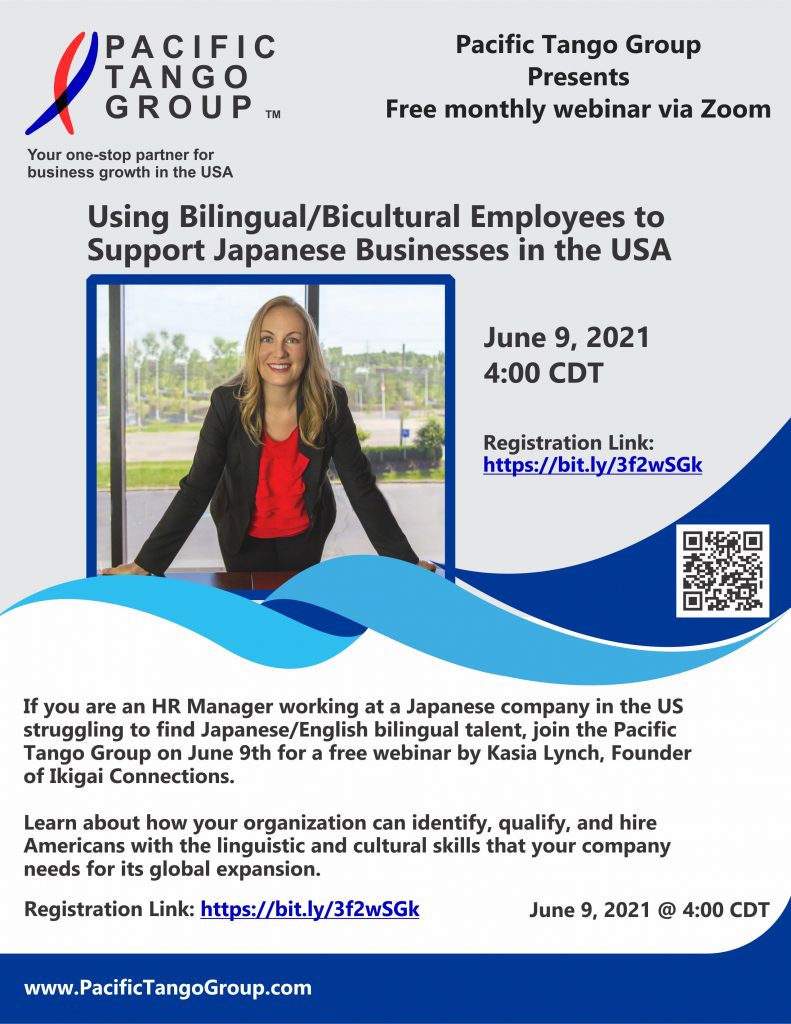
Please share if you know any HR professionals working at Japanese companies.
Kasia from Ikigai Connections will be promoting the benefits of job seekers who have been on JET to companies in the US, and will be explaining what it means to have lived/worked overseas, what the JLPT is, how “fluent” is misconstrued, and why they need you.
The free webinar is on June 9 (Wed) 5-6 PM EST and is sponsored by the Pacific Tango Group.
Details/registration: https://bit.ly/3f2wSGk.
[EP8] Exporting Studio Ghibli: The Road to Worldwide Recognition
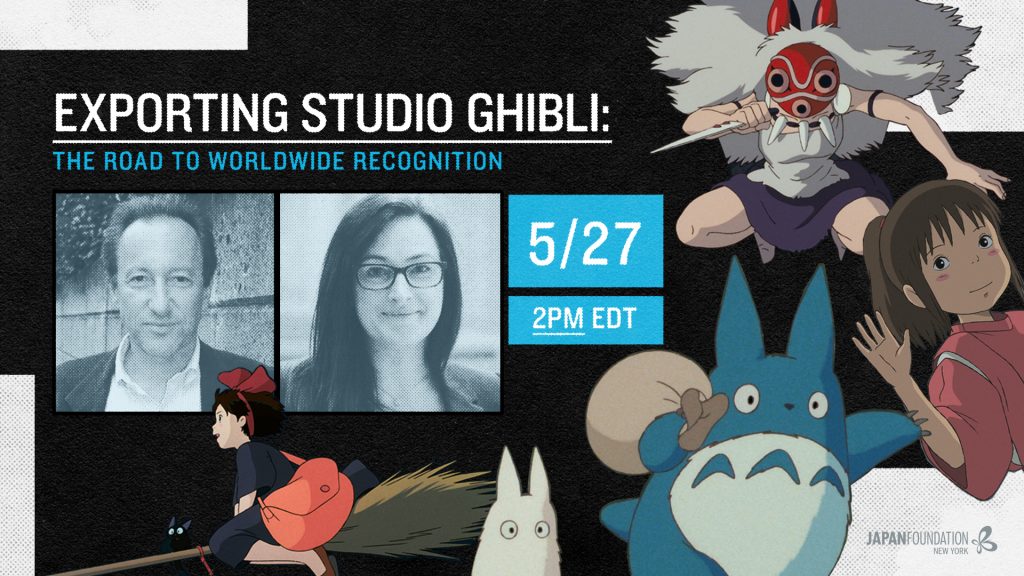
Please join The Japan Foundation, New York for a talk with Steve Alpert, former head of Studio Ghibli’s international division about introducing Studio Ghibli to the world!
About this event
Studio Ghibli and Hayao Miyazaki can now be considered household names around the world, but it wasn’t always that way. In the early days of global distribution with 1997’s Princess Mononoke, major companies like Disney and Miramax were reluctant to take risks on a then-largely unknown animation studio. Various dramas took place between the unbending integrity of Miyazaki and those companies while deciding how to “westernize” the very Japanese style of Ghibli works.
For the second episode of our special “Studio Ghibli series,” we will take a closer look at the early days of Ghibli’s global distribution which were crucial to setting the tone for many subsequent releases of Miyazaki’s works. This event will be moderated by Dr. Rayna Denison who will also be giving us a short presentation about Studio Ghibli’s marketing strategies, and will also be joined by Mr. Steve Alpert who was the “resident foreigner” in the offices of Ghibli and its parent company Tokuma Shoten as the head of the international division for 15 years.
Mr. Alpert joined Studio Ghibli in 1996, one year prior to the release of Princess Mononoke in Japan and played a central role when Miyazaki’s films were starting to take off in international markets. His main role was to sell the international rights to the studio’s films and products, but also served as an intermediate between Miyazaki and distributors, helping to protect Ghibli’s works at the front line in the process of localization. In practice, he was also closely involved with everything from public relations to the translation of the films into English. He even helped as a voice actor and character reference for the louche spy Castorp in The Wind Rises!
In this session, Mr. Alpert and Dr. Denison will discuss how Studio Ghibli created its current international presence and share some of the behind the scenes at Studio Ghibli as described in Mr. Alpert’s book, Sharing a House with the Never-Ending Man.
The discussion will be followed by a live Q&A. If you have any questions about the localization of Studio Ghibli’s works, and the inner workings of the studio, now is your chance to ask the experts! Please ask your question when you register for the event via Eventbrite. Live commentary will also be enabled on the YouTube stream, so you can participate in the Q&A session on-air as well.
This is a FREE event. Registrants will receive the link to the stream via email.
We look forward to seeing you there!
Eventbrite Registration Link: https://www.eventbrite.com/e/ep8-exporting-studio-ghibli-the-road-to-worldwide-recognition-registration-152406713583
Japan-Insights: Emperor Gotoba: A Swordsmith Emperor in Medieval Japan
************By Makoto Shirai, secretary, Japan-Insights Research Institute (Non-profit organization in Tokyo)
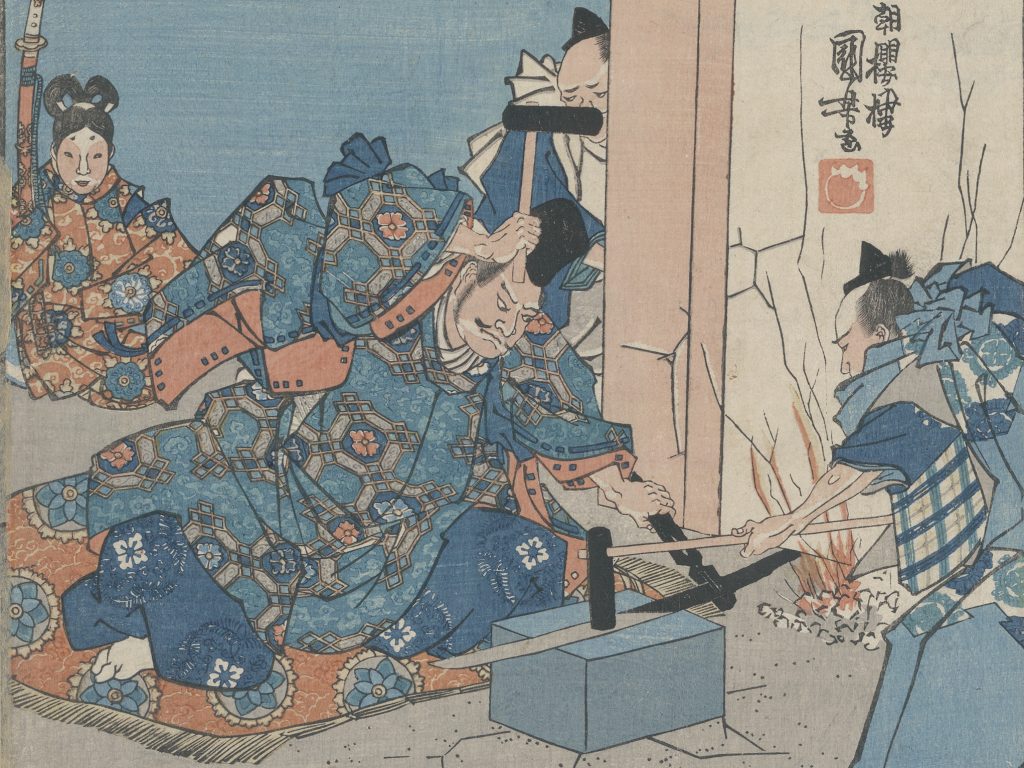
Dear Friends,
New essay on Japan-Insights!
2021 marks the 800th anniversary of Emperor Gotoba’s arrival in the Oki Islands, Shimane prefecture. Our Expert, Paul Martin, takes a closer look at the extraordinary life and influence on the sword and poetry worlds of the emperor.
https://topics.japan-insights.jp/Public/pdf/japan-insights_jp/topics/JIN_EmperorGotoba.pdf
Please share this expert’s experience!
Japan-Insights is a nonprofit open database compiled by leading experts in Japanese studies. The posts present a broad range of historical and contemporary topics that encourage visitors to engage with the real Japan through immersive experiences. Follow the Facebook page and website to learn about and share these insights from around the country!”
#japan #japaneseculture #Oki
Japan-Insights: Experiencing Edo culture near Tokyo
************By Makoto Shirai, secretary, Japan-Insights Research Institute (Non-profit organization in Tokyo)
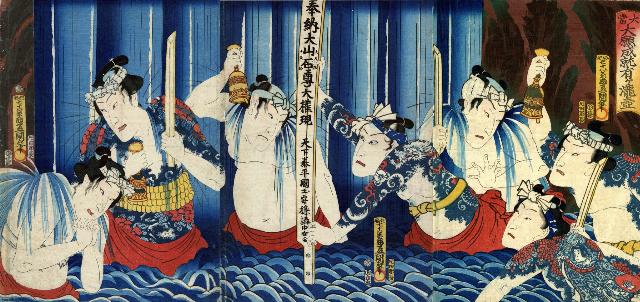
Dear Friends,
Have you visited Mt. Oyama near Tokyo?
Let me introduce an essay from Japan-Insights archives.
The fourteenth one is on Mt. Oyama Pilgrimage by Mrs. Alice Gordenker.
https://topics.japan-insights.jp/Public/pdf/japan-insights_jp/topics/JIN_OyamaPilgrimage.pdf
Please share this expert’s experience!
Japan-Insights is a nonprofit open database compiled by leading experts in Japanese studies. The posts present a broad range of historical and contemporary topics that encourage visitors to engage with the real Japan through immersive experiences. Follow the Facebook page and website to learn about and share these insights from around the country!”
#japan #japaneseculture #Oyama
JFNY Literary Series Episode #3
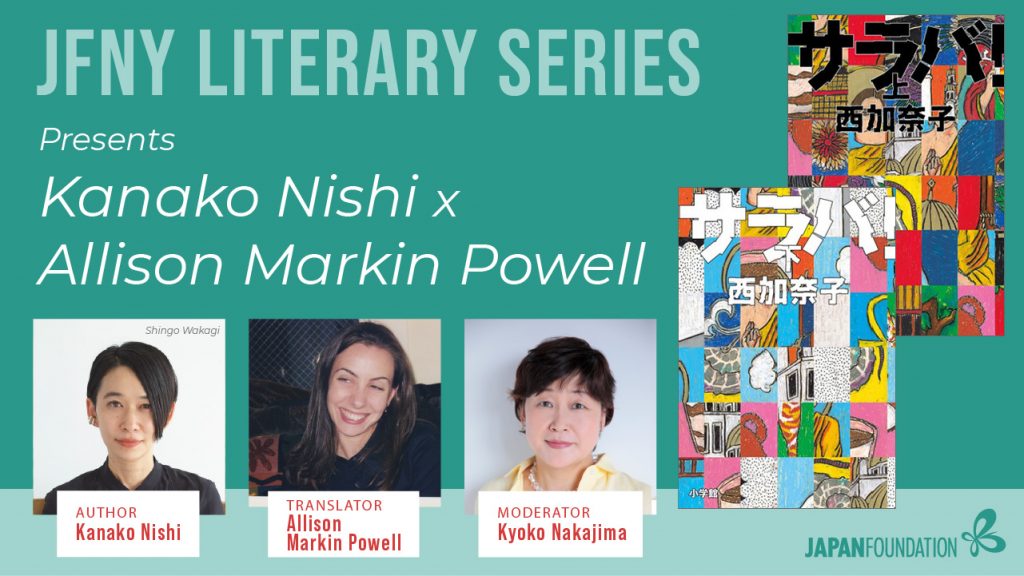
JFNY Literary Series invites notable writers in Japanese literature and their translators to discuss their work, speak on the art of translation, and touch upon the current literary scene in Japan.
This session features Kanako Nishi and her translator Allison Markin Powell, moderated by writer Kyoko Nakajima. Ginny Tapley Takemori from the collective Strong Women, Soft Power and interpreter Bethan Jones also joins the session. Nishi is an award-winning writer who has published more than two dozen books in Japan. Several of her writings are available in English online, all of which were translated by Powell:
In the Age of Endless Scrolling, Jun’ichiro Tanizaki Helps Us Stand Still
On Beauty, Sexual Violence, and Toni Morrison’s The Bluest Eye
The event is now available to watch on our YouTube channel! Watch the event here:
By Jack McDonough, 2021 prospective JET
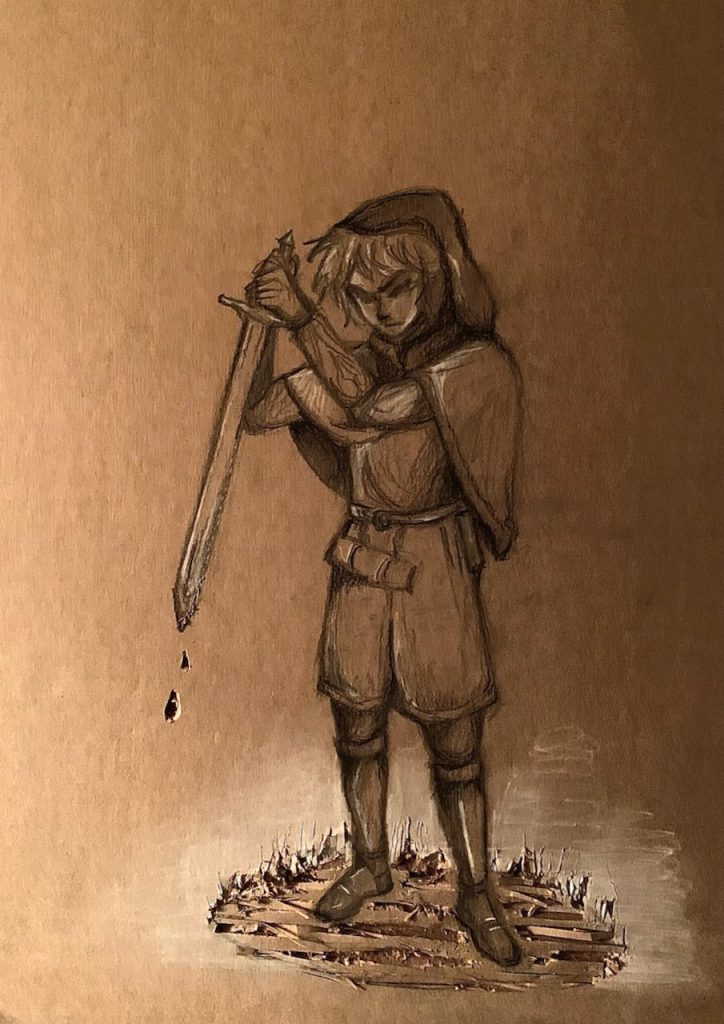
Picture laying in a peaceful meadow with waving fields of wheat, the melody of chirping birds, and rays of warm light from the sun above. As you stand up to walk away, a voice calls your name and you step towards it; upon taking your first step, the meadow melts away to a seascape occupied by two Viking fleets. Hundreds of ships and thousands of men clash for control of the sea as you hear the clanging of metal swords, the crunching of wood splinters, and the cries of dying soldiers. You witness death and destruction until you are thrown overboard from your ship and everything goes dark. This is the opening of Vinland Saga.
Vinland Saga is an anime produced by Wit Studio which was adapted from the manga ヴィンランド・サガ (Vinland Saga) by Makoto Yukimura. Set in the early 11th century in Danish-occupied England, Vinland Saga follows Thorfinn and his quest for revenge against Askeladd: the man who killed Thorfinn’s father Thors. Thors, a legendary warrior and former leader of the fabled Jomsvikings, deserted his position after a decade of war so that he could live in peace with his family on the island of Greenland. The Jomsvikings find Thor’s village and demand his return to command, which is a plot to kill Thors in an ambush. Thors accepts due to their threat of destroying his village. When setting sail, Thorfinn sneaks aboard Thors’ ship. Thors is ambushed and killed by Askeladd and Thorfinn vows to kill Askeladd in a duel, going against Thors’ dying request for Thorfinn to never kill anyone. As Thorfinn is young and far from home, he joins Askeladd’s mercenaries so that he can survive and become a warrior great enough to kill Askeladd.
Vinland Saga is a rare anime in that it’s devoid of common anime tropes, making it a show that non-anime watchers can easily get into. The show also has a great soundtrack of epic battle themes and soft, melodic piano scores that contrast the scenes of bloodshed and the beautiful landscapes Thorfinn both sees and imagines throughout his journey. The animation by Wit Studio is fantastic and transports you to the various locations shown in the anime. Vinland Saga also has compelling characters who all have clear goals, but most of those characters die in the pursuit of achieving their dreams.
My favorite character is Askeladd, who serves as the enemy and the father of Thorfinn as he grows up on the march in war-torn England. Thorfinn and Askeladd’s relationship morphs from avenger and villain, to soldier and commander, and eventually student and teacher. At first, Askeladd seems like the classic sell-sword: he follows the highest bidder to become as rich as possible; but as the story progresses, you find out his goal is much greater and his deeds almost seem necessary. In one scene, Askeladd remarks, “everyone’s a slave to something,” which sums up the major theme of the story: Thorfinn is a slave to revenge, Askeladd is a slave to his nation’s legacy, and Thors is a slave to his family and finding harmony in a chaotic world. There are other characters who fit this description, but I’ll leave that for you to discover. Vinland Saga is definitely a must-watch for both anime and non-anime watchers, especially if you enjoy historical fiction, which judging from the success of shows like Peaky Blinders, Vikings, and The Last Kingdom, there are plenty of fans of the genre. As long as you’re a fan of good storytelling, then you’ll be captivated by Vinland Saga from the opening battle to the compelling conclusion.

